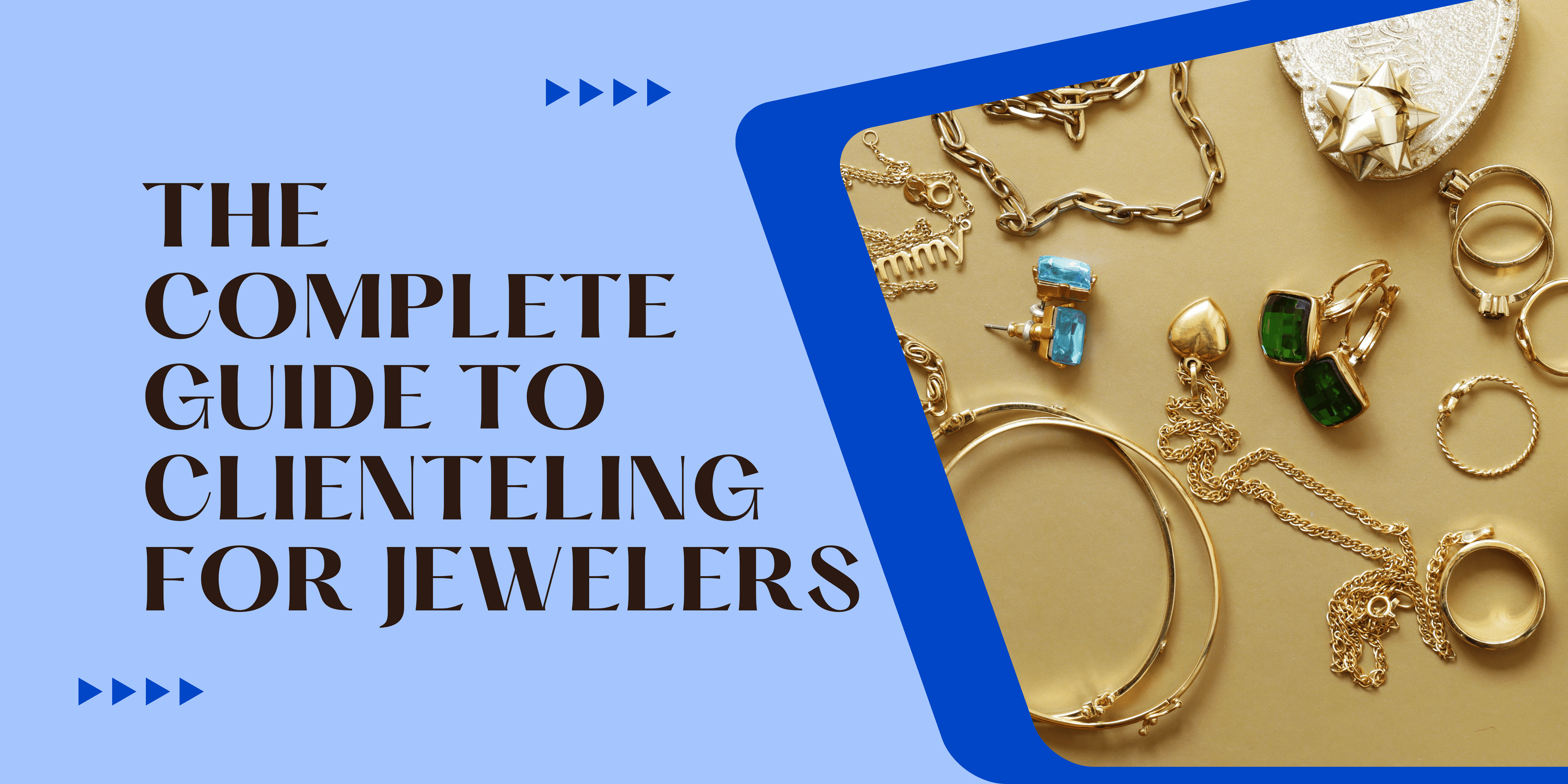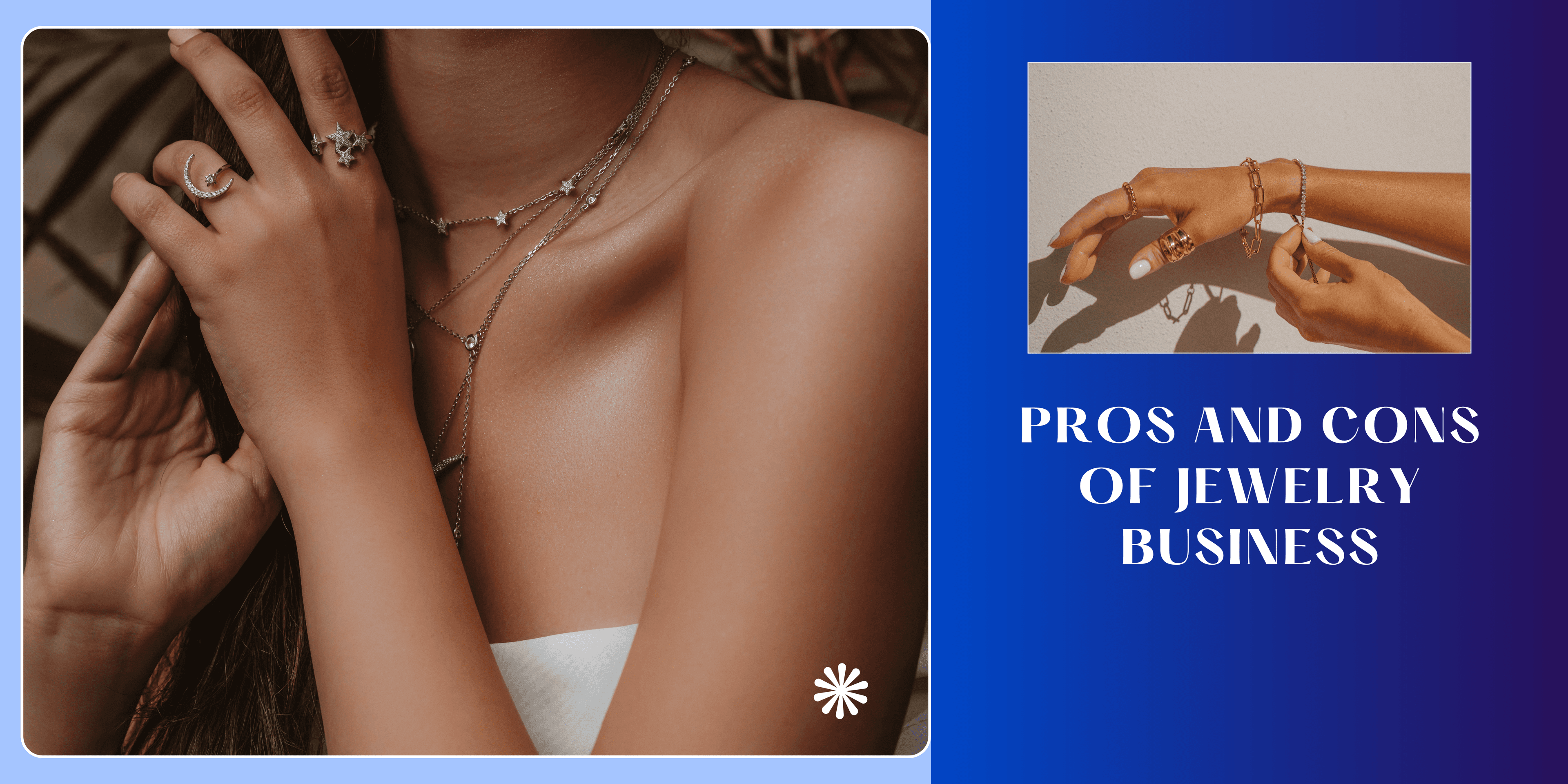
Jewelry retailers aim to build long-lasting relationships with their customers. Clienteling is a strategy that transforms these relationships into powerful business asset that help them thrive.
Let’s start by defining clienteling. For jewelers, clienteling means offering clients personalized recommendations that they crave by tracking things such as their preferences, purchase history, and important dates.
This matters because 76% of customers say they’d be more likely to purchase from a business that personalized its offerings, and 86% of marketers see positive ROI from their personalization strategies.
This guide will explore how jewelers can use clienteling to create strong customer relationships, more personalized shopping experiences and higher sales. We'll examine key components of successful clienteling and explore the value of jewelry clienteling softwares such as CaratIQ, which streamline the entire clienteling process.
Let’s get started.
The Importance of Clienteling in the Jewelry Business
So, what is clienteling, and why is it important?
Here’s an example scenario to demonstrate clienteling in action:
A customer walks into your store looking for an anniversary gift. With effective clienteling strategies in place, you would know their spouse's ring size, gemstone/color preferences, wishlist, and even details such as their past purchases, allowing you to suggest complementary pieces. This creates an experience that goes beyond the purchase itself.
Now, let’s imagine extending this personalized experience to your online store:
When the same customer visits your online store, your website recognizes them and highlights new arrivals in their preferred style. Your clienteling system can even reach out to your customers with personalized emails reminding them of their significant other’s upcoming birthday, suggesting pieces that match their interests.
As you can see, whether online or in-person, clienteling deepens customer loyalty and makes each interaction feel thoughtful and personalized.
Using clienteling tools is vital for anyone operating in the jewelry industry.
How Clienteling Helps Jewelry Businesses Exceed Customer Expectations
Jewelry isn’t just metals and stones – it’s emotions, memories, and meanings. Great jewelers know that the jewelry buying experience should reflect such emotions. Clienteling software helps them make it happen.
Here’s how clienteling helps jewlery businesses exceed customer expectations:
1. Building trust and loyalty: Time and time again, we see evidence that personalization directly impacts brand trust. For example, a study by Salesforce found that 80% of consumers believe the customer experience is as important as the product in a purchasing decision. When jewelers pay close attention to individual customers, they improve buying experiences which increase average order values and boosts customer retention.
2. Increasing sales: Well-targeted product recommendations can boost revenue. In fact, Proximity Insight found that a remarkable 83% of customers are more likely to make repeat purchases when they are provided with personalized suggestions.
3. Standing out from competitors: Exceptional personalized service will make your business stand out, especially considering that 45% of customers switch brands due to impersonal customer service.
4. Facilitating repeat business: A study by Harvard Business Review found that improving customer retention by just 5% can increase profits by 25% to 95%. By tracking past purchases and preferences, jewelers can suggest additions or upgrades to a customer's collection, encouraging long-term loyalty. Remember: it’s often cheaper to retain customers than find new ones.
5. Improving inventory management: Last but not least, understanding customer preferences helps you stock items that are more likely to sell, reducing excess inventory and cutting overhead costs.
The Key Components of Effective Clienteling
Before we explore the essential elements of clienteling, let's introduce CaratIQ, a clienteling software designed specifically for jewelers. CaratIQ offers features that help jewelry businesses implement and manage their clienteling strategies effectively.
Let’s explore the five most important components of clienteling, all of which can be delivered through CaratIQ:
1. Personalized Customer Profiles
Detailed customer profiles form the foundation of effective clienteling. Profiles should include:
● Personal information (name, contact details, birthdate)
● Purchase history (including details of each item bought)
● Preferred styles and materials (e.g., vintage designs, white gold, sapphires)
● Jewelry sizes (ring, necklace length, etc.)
● Special dates (anniversaries, birthdays of family members)
● Communication preferences (email, text, phone)
● Notes on personal tastes and lifestyle (e.g., active lifestyle, professional dress code)
By creating detailed customer profiles, you can:
● Offer well-targeted product recommendations (e.g., suggesting rose gold pieces to a customer who's shown a preference for this metal)
● Remember important details without asking repeatedly (like ring sizes or preferred earring backs)
● Anticipate customer needs before they arise (such as offering cleaning services for a piece purchased a year ago)
● Create a more personal shopping experience (by referencing past conversations or life events)
CaratIQ's customer management system allows you to create comprehensive profiles with custom fields designed specifically for the jewelry industry. For instance, you can add fields for metal allergies, preferred brands, gem colors, and more. Being cloud-based, CaratIQ ensures all staff members have access to up-to-date information, so you can deliver consistent, personalized service across your team and channels – both online and in-person.
2. Proactive Communication
Clienteling is all about being proactive. Armed with customer insights, you can reach out with targeted, proactive communications that drive sales. This might include:
● Invitations to exclusive events (like a private viewing of rare gemstones for your top customers)
● Follow-ups on recent purchases (such as checking in on how a newly sized ring is fitting)
● Maintenance reminders (e.g., suggesting a six-month check-up for a watch purchase)
● Educational content (like care tips for different types of gemstones)
In CaratIQ, scheduling and sending personalized messages via email or SMS is incredibly easy. For example, you can set up automated messages for birthdays or purchase anniversaries, ensuring you stay connected with your customers without any manual effort.
3. Personalized Product Recommendations
One of the most powerful aspects of clienteling is the ability to suggest products that align with a customer's taste and past purchases. For example, if a customer has purchased several Art Deco-style pieces, you might suggest a newly acquired vintage brooch from the 1920s. Or, if a customer bought an engagement ring last year, you could contact them with wedding band suggestions as their wedding date approaches.
CaratIQ analyzes purchase history and preferences to generate personalized product suggestions that can be broadcast to your customers.
4. Exceptional In-Store Experience
While digital communication is exceptionally important, jewelers operating both in-store and online need to deliver consistent personalized buying experiences. With CaratIQ, your in-store staff can access customer information instantly, allowing them to:
● Greet customers by name and reference recent life events or purchases
● Recall past interactions and preferences, creating a sense of continuity (e.g., "Last time you were interested in emeralds. Would you like to see our new emerald collection?")
● Provide consistent service across different staff members or store locations
5. After-Sales Follow-Up
The clienteling process does not end when a customer leaves your store. Following up after a purchase reinforces the relationship and encourages future business. It also provides opportunities to ensure customer satisfaction and address any issues promptly.
CaratIQ automates many aspects of after-sales follow-up, including:
● Thank-you messages personalized to the specific purchase
● Requests for reviews or feedback
● Care instructions for purchased items (e.g., how to clean a particular gemstone)
● Invitations for cleaning or maintenance services
● Reminders about warranty or insurance options
● Information about complementary pieces or services
Here’s an example: After selling a high-end watch, you could set up a series of follow-ups: an immediate thank-you message, review request, care instructions after a week, a check-in after a month to ensure satisfaction, and a service reminder after six months.
How to Properly Implement Clienteling Strategies in Your Jewelry Store
Now that we've explored the key strategies behind clienteling and how CaratIQ optimizes them, let's look at how to practically implement these strategies in your jewelry store:
Step 1: Collect and Organize Customer Data
Start by gathering comprehensive information about your customers. This is the foundation of effective clienteling.
● Train staff to collect relevant data during every customer interaction
● Use CaratIQ's custom fields to store detailed information specific to jewelry retail
● Ensure data accuracy and completeness by regularly reviewing and updating profiles
Remember, the goal is to build a 360-degree view of each customer. This might include their purchase history, style preferences, budget range, and even personal milestones.
Step 2: Train Staff on Clienteling Practices
Your team is crucial to the success of your clienteling efforts. Invest time in training them to use both clienteling techniques and CaratIQ effectively.
● Conduct regular training sessions on personalized customer service
● Familiarize staff with CaratIQ's features and benefits
● Encourage a customer-centric culture throughout your organization
● Role-play common scenarios to help staff practice using customer data in interactions
For example, train staff on how to use CaratIQ to quickly access a customer's profile before an appointment, allowing them to prepare personalized recommendations.
Step 3: Develop Personalized Marketing Campaigns
Use the data you've collected to create targeted, relevant marketing efforts.
● Segment customers based on preferences and behavior using CaratIQ's analytics tools
● Create bespoke promotions and offers for different customer groups
● Schedule personalized communications using CaratIQ's integrated tools
● Track the success of your campaigns and adjust as needed
You might create a campaign for customers who haven't made a purchase in the last year, offering them a personalized styling session to rekindle their interest.
Step 4: Monitor and Adjust Strategies
Clienteling is an ongoing process that requires continuous refinement.
● Use CaratIQ's analytics to assess the performance of your clienteling efforts
● Gather customer feedback regularly to understand their experience
● Stay updated on industry trends and adjust your strategies accordingly
● Continuously train and update your team on best practices
For instance, if you notice that customers respond well to post-purchase care emails, you might expand this program with more detailed content or video tutorials.
Summing Up
Clienteling is a powerful strategy that can transform your business. Here’s a quick recap of what makes it work:
● Truly knowing your customers
● Offering personalized, thoughtful service
● Letting data guide your decisions
● Creating great experiences, both in-store and online
By implementing solid clienteling practices and using jewelry clienteling softwares like CaratIQ, you can build stronger, longer lasting relationships with your customers. CaratIQ can help you run your jewelry busines’s clienteling strategy. It’s designed to save you and your team time while streamlining your sales processes, boosting sales, and helping grow your business.
Interested in seeing how CaratIQ can help your business? Get in touch and see it in action yourself.

You may also like
View all

